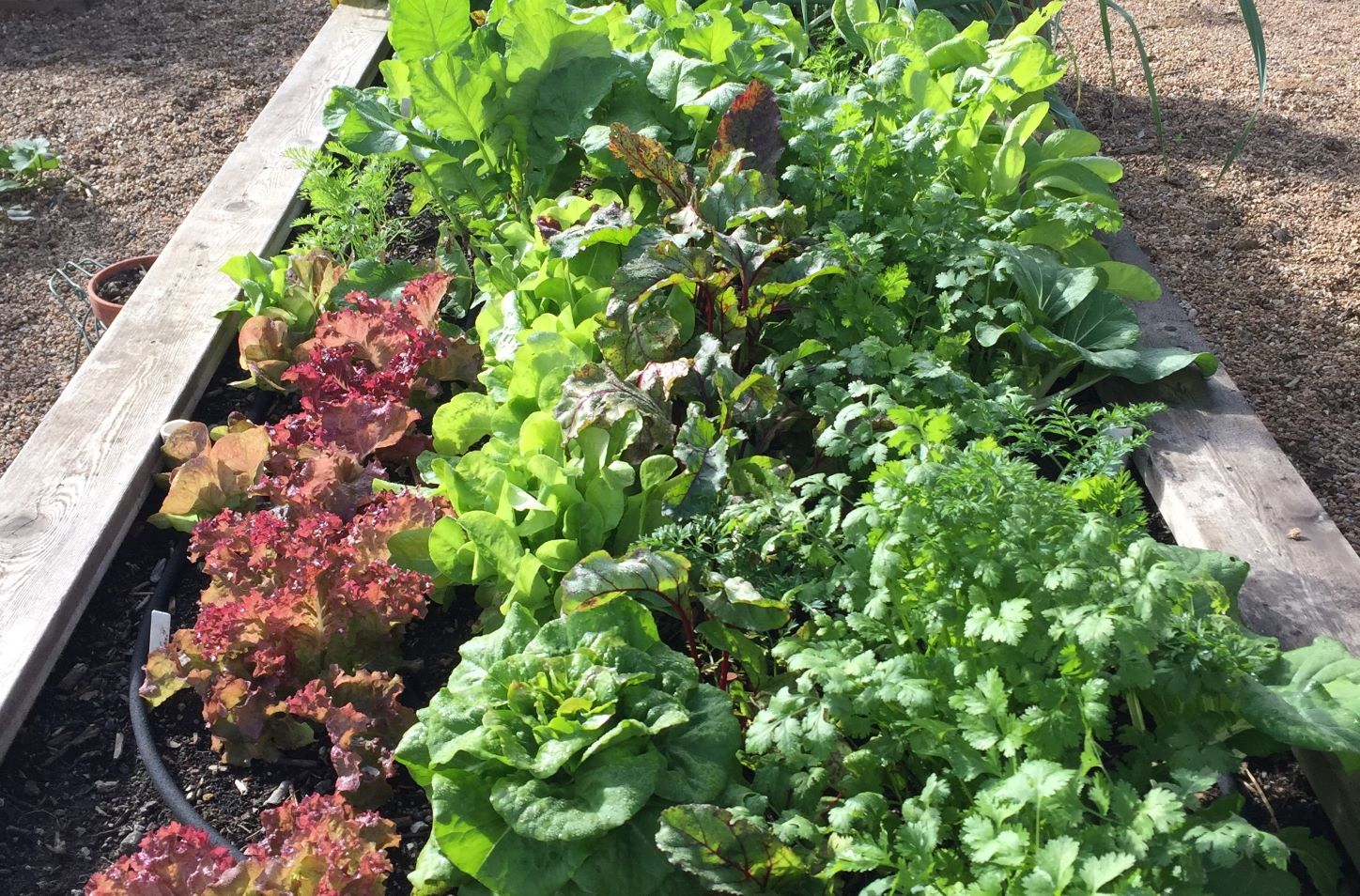Fall Salad Gardening
 With the latter portion of August (somehow) upon us, many may soon be turning to their vegetable gardens eager to sow fall salad greens and root vegetables. With soils still warm but the weather cooler for long periods, autumn is the perfect time to grow lettuce, spring radish, spinach, turnips, mustard, and many other leafy vegetables. So, how should one go about this?
With the latter portion of August (somehow) upon us, many may soon be turning to their vegetable gardens eager to sow fall salad greens and root vegetables. With soils still warm but the weather cooler for long periods, autumn is the perfect time to grow lettuce, spring radish, spinach, turnips, mustard, and many other leafy vegetables. So, how should one go about this?
Beginning at plant selection, pay attention to the “days to harvest” indicated on the packets of seed varieties. While fall encourages good growth of the vegetables mentioned, the window for growth itself may be limited depending on how soon in the year winter weather decides to kick in. Aim for the shortest number of growing days possible to ensure a harvestable ripe crop. Then, when sowing them, remember to plant the seeds slightly deeper than recommended and to mulch them. This will assist the seedlings in surviving the remnant summer heat in which they’ll likely emerge.
When looking at specific vegetables, remember that lettuces are fragile, requiring some babying for survival even in ideal growing conditions. Be sure to select varieties with strong cold hardiness to address encroaching weather. If possible, sow the plants in a location protected from wind and intense afternoon sun. Also, leaf lettuce is preferable to head lettuce in autumn, thanks to the much briefer growing period.
If planting spinach, environmental pressure will be slightly less abundant thanks to the plant’s somewhat significant cold tolerance. Remember, however, spinach easily bolts in intense heat, making location selection once again pertinent. When done tactfully, fall-planted spinach can also begin a spring stand of spinach should proper care measures be followed. Clipping only individual leaves from the plants during harvest, covering the spinach stand with mulch around November, and removing the mulch in early spring. The plants will resprout in spring, with the caveat that they may also be quicker to go to seed that spring.
Spring radishes planted in the fall typically have a short growing period, so a couple of successions of crops between August and October can be harvested. Fall radishes (daikon) are also planted at this time, but their growing period is long enough that they should ideally be planted by mid-August. Heat exposure should be watched with all types of radishes, making them stronger and spicier.
Turnips, too, should ideally be in the ground by early August to allow time for development. That said, the crops get woodier and less desirable as they enlarge. So, a smaller crop harvested before the freeze may still produce a desirable product. Emerging turnips compete poorly with weeds, which will be rampant in warm soil, so staying on top of garden maintenance activities is essential.
All in all, there is plenty of time left in the year to grow numerous vegetables if you so choose. Romaine calm and garden on… I’m sorry.
Anthony Reardon, Horticulture Smalls Farms Agent, 2024
Have questions? The Garden Hotline is staffed by trained EMG volunteers and Extension staff who will assist you with questions.
Phone: (913) 715-7050
Email: garden.help@jocogov.org